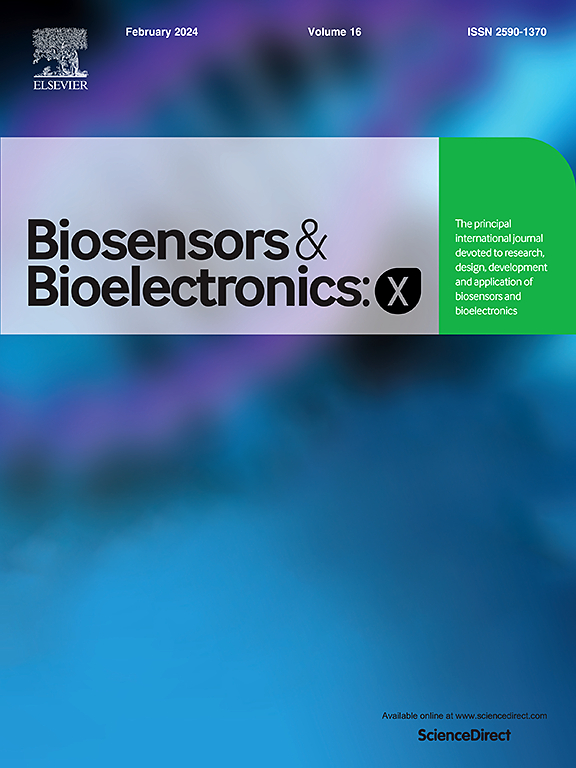表面等离子共振生物传感器对SARS-CoV-2的传感:氮化硅和石墨烯的作用
IF 10.61
Q3 Biochemistry, Genetics and Molecular Biology
引用次数: 0
摘要
我们对SPR生物传感器进行了系统的优化和分析,重点研究了银(Ag)、氮化硅(Si₃N₄)、石墨烯和ssDNA层厚度等设计参数的影响。开发了两种配置,Sys₃和Sys₅,并在PBS溶液中不同的SARS-CoV-2浓度下进行了数值评估,范围从0.01 nM到100 nM。Sys₃以Ag (55 nm)、Si₃N₄(13 nm)和ssDNA (10 nm)优化,表现出卓越的灵敏度(371.7°/RIU)、低检测限和高检测精度,使其适合精密应用。相比之下,Sys₅将石墨烯层(0.34 nm)与50 nm的Ag, 10 nm的Si₃N₄和10 nm的ssDNA结合在一起,表现出卓越的鲁棒性和更高的优点(2287.2 RIU⁻1),在更广泛的动态范围内提供一致的性能。这些结果突出了SPR生物传感器在适应不同诊断需求方面的多功能性。本文章由计算机程序翻译,如有差异,请以英文原文为准。
Surface plasmon resonance biosensors for SARS-CoV-2 sensing: The role of silicon nitride and graphene
We present a systematic optimization and analysis of SPR biosensors, focusing on the influence of design parameters such as silver (Ag), silicon nitride (Si₃N₄), graphene, and ssDNA layer thicknesses. Two configurations, Sys₃ and Sys₅, were developed and numerically evaluated under varying SARS-CoV-2 concentrations in PBS solution, ranging from 0.01 nM to 100 nM. Sys₃, optimized with Ag at 55 nm, Si₃N₄ at 13 nm, and ssDNA at 10 nm, demonstrated exceptional sensitivity (371.7°/RIU), low limit of detection, and high detection accuracy, making it suitable for precision applications. In contrast, Sys₅, incorporating a graphene layer (0.34 nm) alongside Ag at 50 nm, Si₃N₄ at 10 nm, and ssDNA at 10 nm, exhibited superior robustness and a higher figure of merit (2287.2 RIU⁻1), offering consistent performance across a broader dynamic range. These results highlight the versatility of SPR biosensors in adapting to diverse diagnostic needs.
求助全文
通过发布文献求助,成功后即可免费获取论文全文。
去求助
来源期刊

Biosensors and Bioelectronics: X
Biochemistry, Genetics and Molecular Biology-Biophysics
CiteScore
4.60
自引率
0.00%
发文量
166
审稿时长
54 days
期刊介绍:
Biosensors and Bioelectronics: X, an open-access companion journal of Biosensors and Bioelectronics, boasts a 2020 Impact Factor of 10.61 (Journal Citation Reports, Clarivate Analytics 2021). Offering authors the opportunity to share their innovative work freely and globally, Biosensors and Bioelectronics: X aims to be a timely and permanent source of information. The journal publishes original research papers, review articles, communications, editorial highlights, perspectives, opinions, and commentaries at the intersection of technological advancements and high-impact applications. Manuscripts submitted to Biosensors and Bioelectronics: X are assessed based on originality and innovation in technology development or applications, aligning with the journal's goal to cater to a broad audience interested in this dynamic field.
 求助内容:
求助内容: 应助结果提醒方式:
应助结果提醒方式:


